Author: Carol Hein-Creger, owner and director of the CANINE TRAINING CENTER
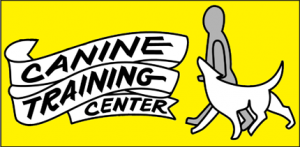 Dogs form their perceptions of people based on the messages they pick up on during every day life with each individual. Whether intended or not, people send messages to dogs with virtually every interaction, and the dog forms an “opinion” or perception of the person’s status based on those messages. This perception determines how the dog will interact with and respond to the person in question.
Dogs form their perceptions of people based on the messages they pick up on during every day life with each individual. Whether intended or not, people send messages to dogs with virtually every interaction, and the dog forms an “opinion” or perception of the person’s status based on those messages. This perception determines how the dog will interact with and respond to the person in question.
Even when dogs understand what’s expected of them, they generally won’t comply or respond to commands unless they view the person giving the orders as “higher ranking”, or, in other words, as an authority figure. This is evident when we see trained dogs fail to respond to certain individuals, often within the dog’s own family. This is because those individuals have failed to present themselves as authority figures to the dog, so even though they know what words or commands to say, the dog feels no sense of obligation to the person giving them.
Good, effective leaders have certain characteristics that mark them as leaders. They don’t have a million rules, but the ones they do have are enforced emphatically. They are consistent. They are fair. They maintain an air of calm. They control access to all resources. They lead, and subordinates follow them.
When we allow dogs to pull us from place to place when on a leash, we effectively send the message that the dog is the leader and we are the follower, or, put in other terms, that we are subordinates to them. This greatly influences how they respond to us on several levels, including whether they respond to our commands or direction when there’s something else they’d rather do. In other words, when our behavior “tells” them we’re not in charge, they happily take over. Dogs innately understand that the one in charge gets to make the rules, and those that are not in charge must follow them.
Therefore, if you want to control your dog’s actions in general, you cannot allow him to drag you all over the place when he’s on a leash.
Below are three effective ways to teach your dog not to pull on a leash, each having their own specific pros and cons:
1. The fastest way to teach your dog not to pull on the leash is to apply a well timed, effective leash correction that PREVENTS your dog from getting to the end of the leash. For the correction to be effective, it must be
a. Applied proactively, BEFORE the dog pulls. The leash must be totally slack unless you are actively correction (including immediately prior to and immediately following the leash correction).
b. Firm enough that your dog wants to avoid it in the future. The level of correction necessary will vary depending on each dog’s level of sensitivity.
c. Applied consistently. This “no pull” rule must be enforced each and every moment your dog is on a leash. To do less will confuse your dog and force him to endure more corrections in the future. Inconsistency on the handler’s part will result in inconsistency on the dog’s part.
In addition to the corrections, the dog must receive meaningful rewards when he maintains a slack leash. The best trainers focus just as much on rewarding the dog for maintaining a slack leash as on applying corrections effectively.
PROS: Leash corrections are generally the fastest way to teach your dog to stop pulling when on a leash. Following the criteria above, you will see great progress towards that end in just one or 2 training sessions. As the corrections change your dog’s behavior, you will quickly reach a point when corrections are no longer necessary.
CONS: The dog has to endure some corrections that he initially won’t know how to avoid. The correction technique requires practice to perfect. And finally, many dog owners are inconsistent in the correction’s application.
2. If when a dog pulls he is NEVER allowed to move forward in the direction he’s pulling, the pulling will diminish and eventually disappear as the dog learns that pulling doesn’t work. In order for this method to work the handler must follow these steps.
a. Whenever the dog begins to pull, regardless of his intended destination, the owner must immediately STOP and stand as still as statue, preventing the dog from moving even an inch in the direction he’s pulling. This must be absolutely enforced every moment the dog is on a leash for any reason.
b. The dog must be HEAVILY rewarded, especially initially any time the leash is slack.
PROS: This method requires little skill on the part of the handler. It costs the dog nothing in terms of physical corrections.
CONS: This method can take a long time to teach a dog not to pull, depending on his motivation to move towards something as well as his history of reinforcement for pulling. If he’s been successfully pulling and reaching his intended destination for an extended period of time his pulling will have a long history of reinforcement, which will take much longer to extinguish. Therefore, this technique often works best with puppies that do not have a long history of reinforcement for pulling. Furthermore, to be effective, the handler must be willing to stop EVERY time the dog pulls, even if it’s raining, they’re in a hurry, or just going for a casual walk. Lastly, since the only consequence for pulling is that the dog is not allowed to move forward, this method requires a high frequency of reward in order to inspire the dog to change its’ behavior.
3. There are several devices on the market that when worn by the dog will greatly discourage the dog from pulling. These include head collars and no-pull harnesses.  The head collars work under the premise that, like a horse, if we can turn the dog’s head in a particular direction, we can influence the body to follow. Like a horse halter, there is a loop that goes over the muzzle and another that fits up right behind the dog’s head. Many dog owners have discovered that a head collar gives them almost immediate “power steering”, enabling even youngsters to control large dogs.
The head collars work under the premise that, like a horse, if we can turn the dog’s head in a particular direction, we can influence the body to follow. Like a horse halter, there is a loop that goes over the muzzle and another that fits up right behind the dog’s head. Many dog owners have discovered that a head collar gives them almost immediate “power steering”, enabling even youngsters to control large dogs. 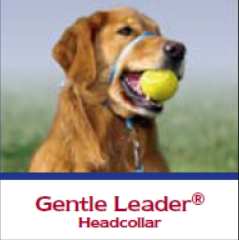 The no-pull harnesses generally inhibit the dog’s front legs from freely moving forward when he pulls, thereby changing his behavior over time.
The no-pull harnesses generally inhibit the dog’s front legs from freely moving forward when he pulls, thereby changing his behavior over time.
PROS: Once the dog adjusts to them, these devices can quickly make a significant change in the dog’s pulling behavior with only a small investment on the part of the owner.
CONS: Especially in the case of the head collar, many dogs initially resist them, sometimes violently and it can take a significant period of time for the dog to adjust to it. Some dog owners are unwilling to put their dog through the adjustment period. Additionally, again in the case of head collars, some owners are afraid the device will be perceived as a muzzle by the general public and are uncomfortable with that possibility. Lastly, it can be difficult to transition dogs from these devices to traditional collars if the idea is to use them as a temporary training measure.
Want to learn more? Check out the current class schedule the Canine Training Center.
This article may not be used or reproduced in any manner whatsoever
without written permission from the Canine Training Center
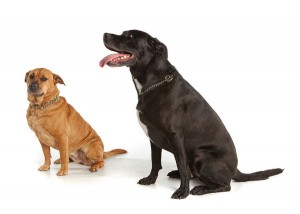 This test demonstrates that the dog can behave politely around other dogs. Two handlers and their dogs approach each other from a distance of 20 to 30 feet, stop, shake hands and exchange pleasantries, and continue on for about 10 feet. The dogs should show no more than casual interest in each other. Neither dog should go to the other dog or its handler.
This test demonstrates that the dog can behave politely around other dogs. Two handlers and their dogs approach each other from a distance of 20 to 30 feet, stop, shake hands and exchange pleasantries, and continue on for about 10 feet. The dogs should show no more than casual interest in each other. Neither dog should go to the other dog or its handler.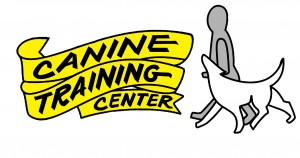 Stay tuned for tips for Test Item 10 – Supervised Separation. Check the Canine Training Center’s page to see when the next Canine Good Citizen class starts! Sign up today on-line or call 517.599.0995.
Stay tuned for tips for Test Item 10 – Supervised Separation. Check the Canine Training Center’s page to see when the next Canine Good Citizen class starts! Sign up today on-line or call 517.599.0995.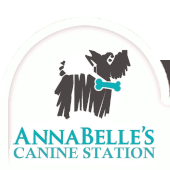

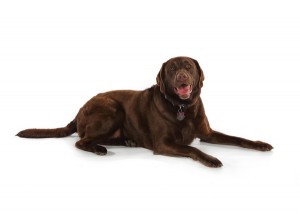
 Dear Carol,
Dear Carol,

